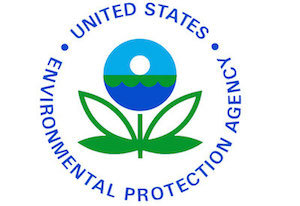environmental Strategist®, between the lines: As an environmental Strategist®, the number one pushback we hear from a business with regard to strategizing on managing and transferring their environmental exposures is, “We do not have any environmental exposures in our business.”
We know every business is impacted by environmental exposures, but instead of getting confrontational, I have found the best comeback to anyone who believes they do not have any environmental exposures impacting their business is to agree with them and then ask, do you have any neighbors that have environmental exposures associated with their business? What if a neighboring business had an environmental loss and it impacted you? When they do a Phase I site assessment they do a minimum of a 2 mile radius search to determine if there are any properties within a 2 mile radius that could cause an environmental loss and impact neighboring properties.
The story below is just one simple example of how vapor intrusion / air emissions from a neighboring property can impact businesses causing sick building syndrome.
eS Risk Management Strategies:
- When meeting with a business that does not believe they have any environmental exposures, explain to them that in a Phase I site assessment they do a minimum of a 2 mile radius search to see if any neighbors could contaminate their property. Ask them to pull up Google maps satellite and type in their address. Now ask them scan back to a 2 mile radius from their property. Lastly, ask them how confident they feel that no neighbors within that two mile radius will contaminant their property? What is their strategy should a third party contaminate their property? Pollution liability insurance can protect property owners should neighboring third parties contaminate their property.
- In preparation for a meeting to strategize on managing and transferring environmental exposures go to the EPA website: https://echo.epa.gov/. At the EPA ECHO website you can type in a street address, a city, a county / perish… and it will give you a list of businesses / property owners that have or currently are involved in a cleanup or environmental violations. Sharing a list of the neighboring properties is a great way to show that a credible source, the government, has identified contaminating neighbors and if the government knows about it, shouldn’t it be of concern to them. What is their strategy?
News Releases from Region 03
PHILADELPHIA (July 21, 2016) – The U.S. Environmental Protection Agency announced today that Sunshine Pride Dairy, Inc. will pay a $179,074 penalty to settle alleged federal environmental violations at its former cheese processing facility in Winchester, Va. The dairy shut down cheese processing operations in December 2011, but left anhydrous ammonia, a hazardous substance, stored in its refrigeration system with only a skeleton maintenance crew at the facility.
EPA alleged that in July 2012, the facility did not properly notify emergency response agencies about two instances when anhydrous ammonia was released into the air. These included one release of between 100-500 pounds and another of more than 1,500 pounds. After the second release, Sunshine Pride Dairy had the remaining anhydrous ammonia drained from the system.
EPA cited the company for not updating its operating procedures to reflect current conditions at the facility, failing to document proper training of its operators, and failing to maintain its ammonia processing equipment. In addition, EPA also alleged that the dairy did not report the ammonia to the state, county and local fire department as required on its annual chemical reporting forms for the years 2012 and 2013.
The settlement resolves alleged violations under three federal statutes: failing to maintain risk management obligations required under the Clean Air Act Section 112(r); failing to comply with community right-to-know reporting requirements; and failing to report releases to the National Response Center, as required by the Comprehensive Environmental Response, Compensation, and Liability Act.
These requirements help to ensure safeguards are in place to protect the health and safety of workers, local residents and the environment. It’s also essential that local, state and national emergency response authorities are notified immediately when a release of hazardous substances occurs, so they can respond quickly and effectively.
As a part of the settlement, the company did not admit or deny EPA’s allegations.
The applicable federal statutes are:
CERCLA and EPCRA release reporting and annual inventory reporting:
https://www.epa.gov/epcra
Clean Air Act Section 112(r): https://www.epa.gov/rmp

